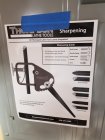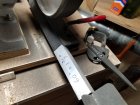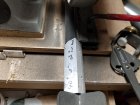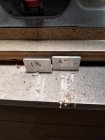- Joined
- Apr 27, 2004
- Messages
- 8,629
- Likes
- 4,970
- Location
- Lakeland, Florida
- Website
- www.hockenberywoodturning.com
why I getting a really sharp point on my 3/8" bowl gouge using the recommended settings from the instructions. It's an awful and unusable grind to say the least.
It is hard to give advice without observing your process.
From the photos the nose is too pointy and the wing appears to have a slight dip in it.
Why is the question
My guess - you are grinding the wing too much and maybe not rolling the tool to the end of the wing.
A slight stop or hesitation will cause the dip and contribute to the pointy tip.
The flute design appears to be a vee which will be more pointy than a parabolic.
The wing can be convex or flat but not concave. Put a straight edge in the top of the wing and hold it toward a light. You will see a dip if one is there.





